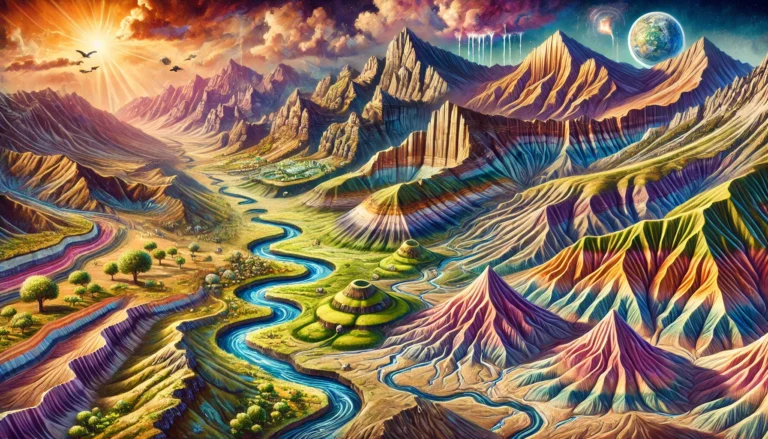Terrigenous Deposits
Let’s take a journey from the towering mountains down to the depths of the ocean. Imagine a piece of rock high up in the Himalayas, battered by rain, wind, and temperature changes over thousands of years. Slowly, it breaks down into tiny fragments, and rivers carry these particles downstream. Some of these sediments settle on riverbanks, but a vast amount makes its way into the ocean. These land-derived materials, once they settle on the ocean floor, are called terrigenous deposits.

Formation and Distribution
Terrigenous deposits are sediments derived from land through weathering and erosion, transported by wind and water, and deposited on the continental shelf and slopes, varying in size from mud to sand and gravel.
The extent and nature of these deposits depend on three key factors:
- Rock Type – Harder rocks take longer to break down, whereas softer rocks decompose faster.
- Climate – Heavy rainfall and fluctuating temperatures speed up weathering.
- Time – The longer a rock is exposed to these forces, the more it disintegrates.
Since larger particles settle quickly, coarser materials like gravel and sand are found near the shore, while finer particles like mud are carried farther into the deep ocean by waves and currents. The distance these materials travel depends on their size and the strength of the sea currents.
Classification of Terrigenous Deposits
Based on particle size, terrigenous deposits are categorized into:
1. Mud: The Finest Particles
- Composed of minute rock-forming minerals, mainly quartz.
- Classified by Murray into blue, green, and red mud based on their mineral composition.
- Found in deeper waters where only the finest particles can reach.
2. Sand: Coarser than Mud
- Made up of larger mineral grains, often seen on beaches and shallow waters.
- Transported by waves but doesn’t travel far into the deep ocean.
3. Gravel: The Largest Fragments
- Consists of rock pebbles and larger particles.
- Found near river mouths and along coastlines where strong waves can deposit them.
Volcanic Products
In volcanic regions, ocean deposits are rich in materials formed by volcanic eruptions. Unlike typical terrigenous deposits, which are mainly quartz-based, volcanic deposits consist of:
- Pyroclastic materials (volcanic ash, pumice).
- Lava fragments weathered down into sediments.
These materials are transported into the ocean by wind, water, and gravity and mix with regular sediments, creating a unique underwater landscape.
Organic Products
Besides rock-derived deposits, ocean floors also accumulate materials from marine plants and animals. These include:
- Shells of molluscs
- Skeletons of microscopic organisms
- Coral remains
Unlike terrigenous deposits, these organic sediments are composed almost entirely of calcium carbonate (CaCO₃). Over time, these biological remains transform into calcareous mud and sand, contributing to the formation of features like limestone deposits and coral reefs.
Conclusion: Terrigenous deposits are the Earth’s way of constantly shaping the ocean floor, carrying stories of weathered mountains, fiery volcanic eruptions, and lifeforms that once thrived in the sea. Whether it’s the finest mud settling in deep waters, volcanic ash merging with oceanic sediments, or skeletal remains transforming into limestone, the ocean floor is a dynamic record of Earth’s geological and biological history.





